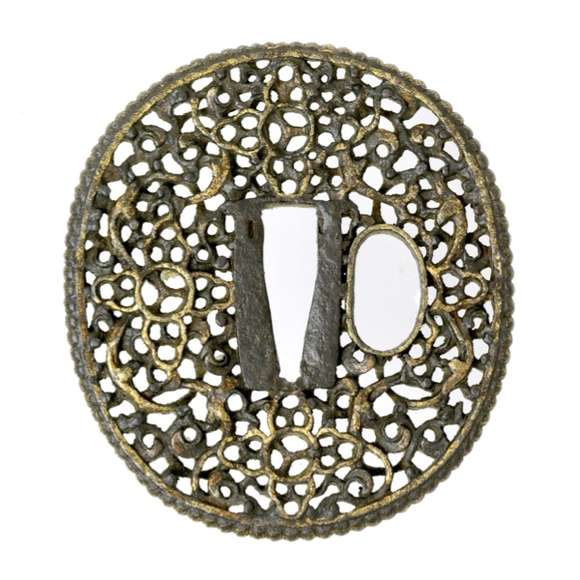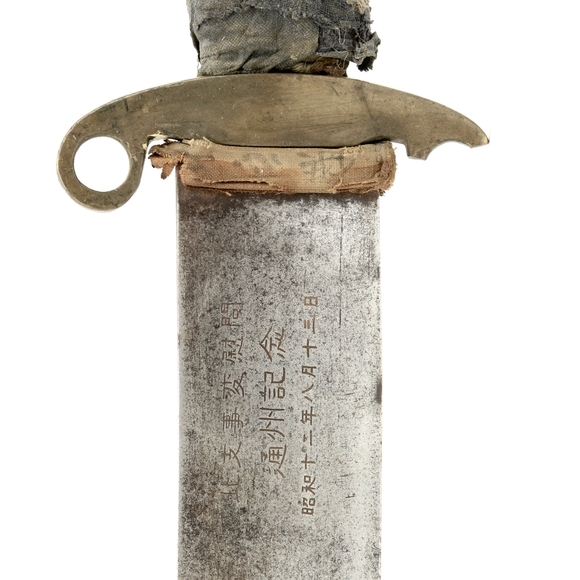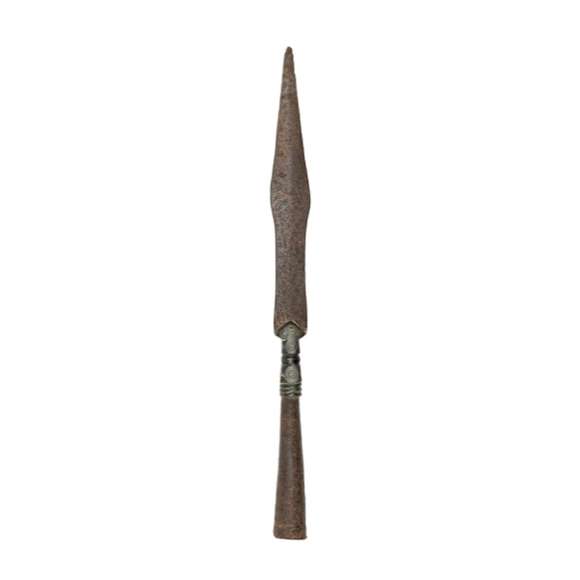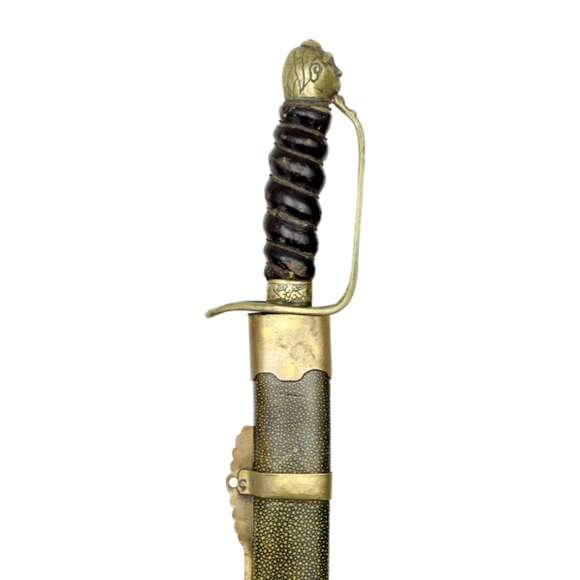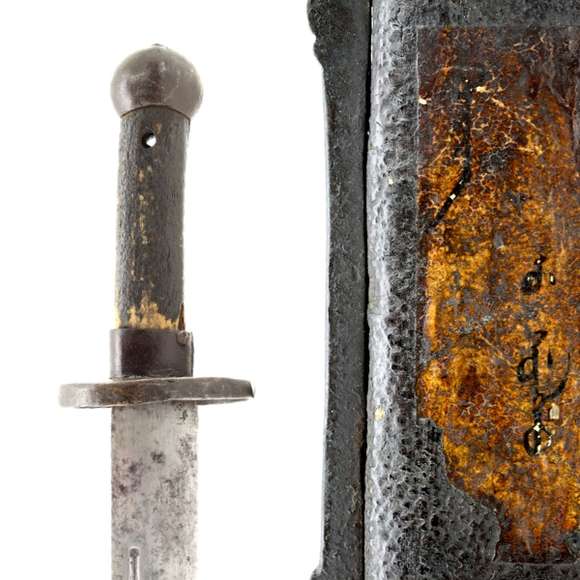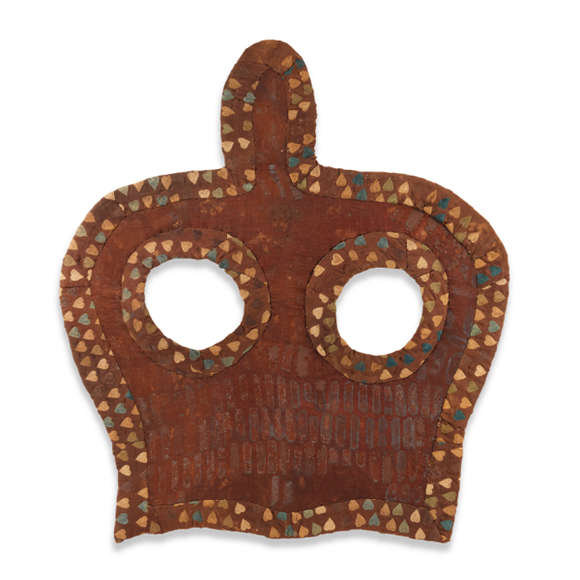A very rare Chinese saber guard dating from the height of the Qing dynasty.

94.7 cm
76 cm
(from handle side of guard)
Forte 5 mm
Middle 4.5 mm
Near tip 3 mm
Forte 32 mm
Middle 29 mm
Near tip 25 mm
1005 grams
(not counting tassel)
15 cm from handle side of guard
(without tassel)
China, Republican period
Steel, brass, wood, ray-skin, lacquer, copper.
Tassel is a plant fiber, possibly viscose.
Early 20th century.
Probably 1920's-1930's.
The Chinese Republican period is the time where many Chinese martial arts developed the forms by which we know them today. It was a time when Chinese martial arts practice slowly moved away from battlefield practicality and into exercises for personal development and health.
Several types of swords were still in production at the time. Most were pure martial arts training pieces with soft metal blades, reflecting the trend towards forms practice. Some rarer examples of republican jian turn up from time to time with excellent blades, differentially heat-treated and well-hardened, and still fully capable of fighting. This piece belongs to that category.

Chen Weiming (陳微明) wielding a very similar jian in 1929.
Notice the flat ricasso and ace-of-spades style guard.
From: Chen Wei-Ming's Compendium on Taiji Sword.
This example
A nice and complete example of a republican period jian, probably dating from the 1920's or 1930's. Its blade with European style ricasso merges into a more traditionally shaped Chinese double-edged blade of lozenge cross-section and with a pronounced center ridge. The blade is forged with an inserted high-carbon edge plate between layers of milder steel (sanmei) and with hints of differential heat treatment. All these effects are very subtly seen, never meant to stand out as the construction was purely for practical reasons: To make a good sword with a hard edge and resilient body. Edge currently not fully sharpenend.
The hilt in classic "ace-of-spades" style with unpolished ray-skin rawhide handle section for good grip. It comes with an old red tassel that is probably original to the piece. Some minor play in the hilt.
Scabbard is made of wood and bound entirely with copper wire, a common practice on late Qing / early Republican pieces. The mounts are in brass with ornamental cutouts in the traditional fashion. Some losses to the scabbard lacquer and wire, but everything that is still there is in stable condition.
At one kilo its a hefty sword but it is balanced to hold a good middle ground between heavy cutting and precise thrusting ability. It has a good, representative feel for a full-fledged fighting jian.
Conclusion
A well-made fighting jian of the Republican period, in good condition and complete with scabbard and tassel. It handles and feels like the better full-length Qing dynasty fighting jian.




















With markings attributing it to the Tongzhou incident and a Japanese surrender tag.
Of classic shape, with a leaf-shaped blade on a socket, connected by a cast bronze base.
A standard pattern Qing military saber, but with the rare addition of a label in Manchu.
Silk horse mask from the Xianbei ruled dynasty which ruled northern China from 386 to 534 A.D.

